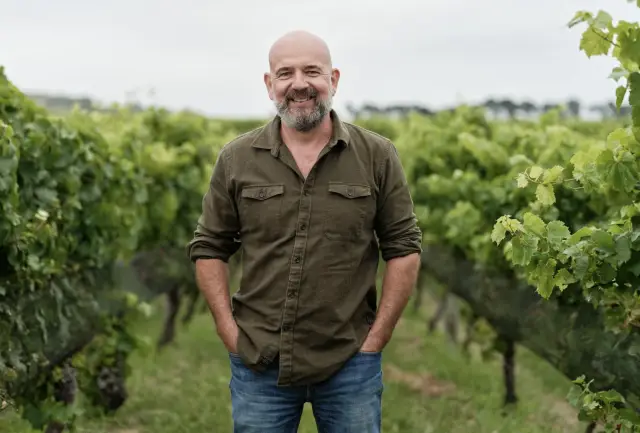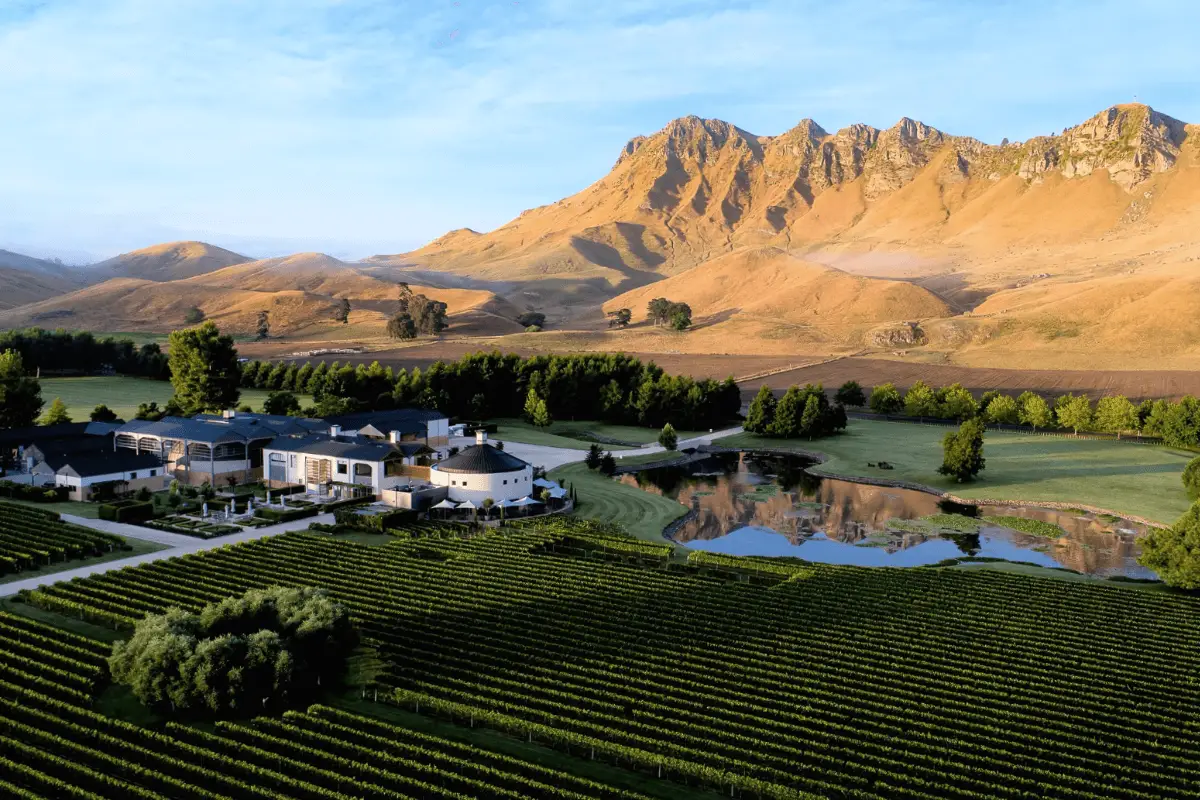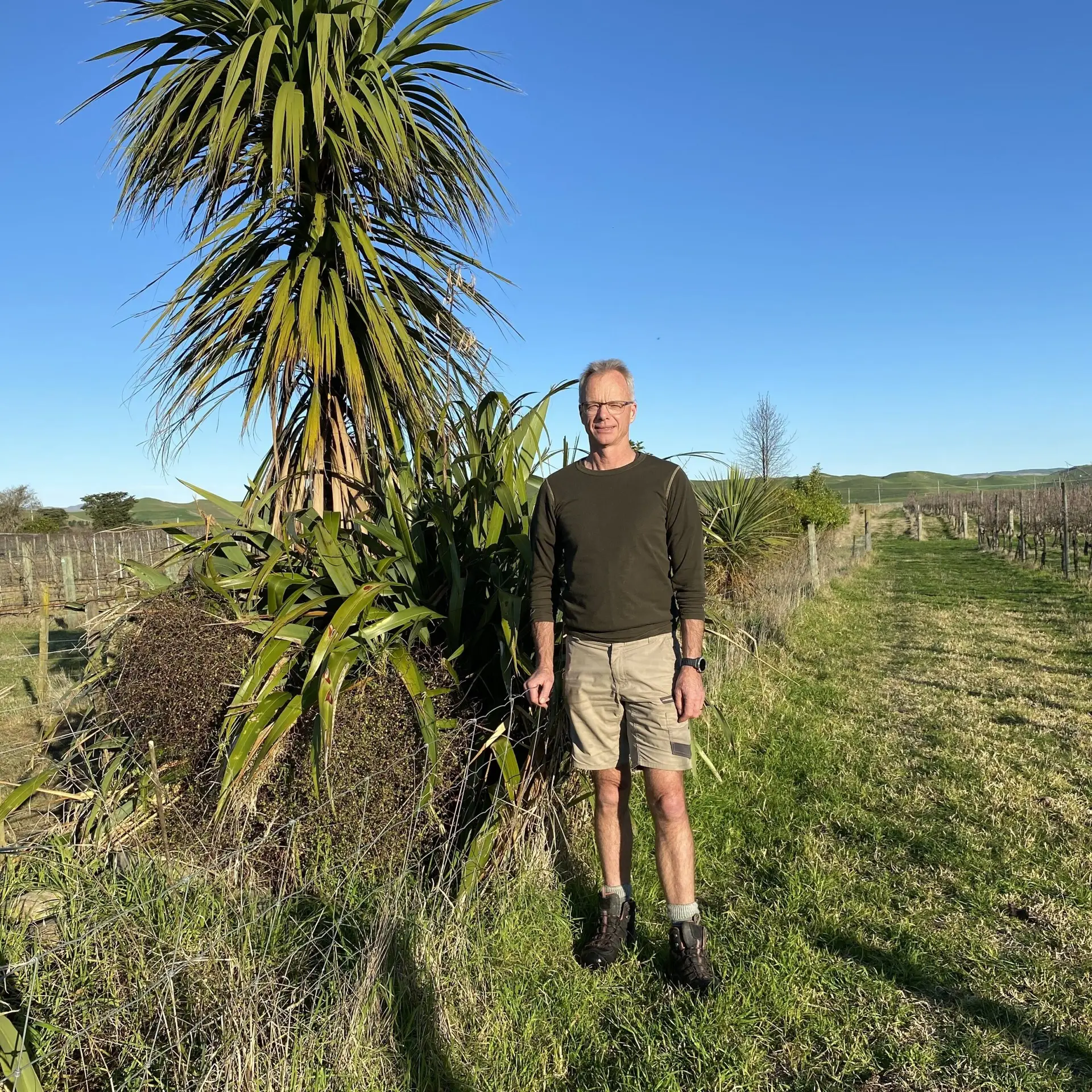This story was written by Christina Pickard, for Seven Fifty Daily SevenFifty Daily | The business and culture of drinks
New Zealand has been producing Chardonnay for decades, but quality examples of this wine are on the rise from both islands—and they’re making their way to U.S. shores
At the edge of a highway in the outer suburbs of Auckland lies one of New Zealand’s most iconic wineries: Kumeu River. The Brajkovich family—with Master of Wine Michael at the winemaking helm—earned their stripes not for producing the bombastic Sauvignon Blancs for which New Zealand is most known, but for championing another popular white variety: Chardonnay. The past four decades have brought Kumeu River international acclaim, particularly for the winery’s single-vineyard Chardonnays, which are frequently compared to the Burgundian whites that so inspired Michael Brajkovich to begin with.
Kumeu’s success with Chardonnay has allowed the producer to enjoy a comparatively large global audience, with distribution to reflect that. But for many wine lovers outside Aotearoa-New Zealand’s borders, Kumeu River is considered an outlier, a lone ship waving a Chardy-shaded flag in a sea of Sauvignon Blanc.
In reality, Kiwi wineries have been producing Chardonnays of all shapes and sizes for as long as the Brajkoviches have. In fact, it was the most-planted variety in New Zealand in the 1990s. Sauvignon Blanc may now rule when it comes to quantity, but the quality of Chardonnay is on its own steep incline.
What Has Changed in New Zealand Chardonnay?
In recent years, producers across New Zealand have stepped up their Chardonnay game in a big way.
“New Zealand Chardonnay is on the rise, and I am very happy that is the case,” says Emma Jenkins MW, a New Zealand-based wine writer, consultant, and judge. “The biggest change over the past 10 years or so has been the maturing of our vineyards and, especially, the winemaking. Sites and clones have been refined, vine age is having an impact on site transparency and fruit complexity, and most of all, winemakers have increasingly figured out what works for them.”
Across New Zealand, high-vigor sites on fertile soils that yield high crops of less interesting fruit are increasingly less common for Chardonnay. Today, most of the country’s Chardonnay is planted on sites with low vigor where soils may be composed of stones, loess, clay, or limestone. They require greater viticulture prowess, but they yield more complex fruit.
Clones and rootstock have also improved in recent years as producers learn which work best for their sites. New Zealand producers typically work with a combination of Dijon and Mendoza clones and now have access to hybrids of both. New rootstocks that keep vine vigor low, resist drought more readily, and are generally hardier have also made a subtle but significant difference to the quality of the fruit.
As sites and clones improve, so, too, do the winemakers.
“I think we are just growing up a bit,” says Steve Smith, MW, the former managing director of Craggy Range winery in Hawke’s Bay and cofounder of premium wine group AONZ Fine Wine Estates. “Twenty years ago it was all about big winemaking input and big statements about character and flavor; region maybe showed a bit, but site was wrapped up in how high the sugars are.”
Today, winemaking techniques like whole-bunch pressing, the use of high solids, native yeasts, malolactic fermentation, minimal sulfur dioxide, and more bespoke oak barrels are widely employed, in an effort to strike that magical balance of turangawaewae (the te reo Māori word for “terroirs”) and winemaker input that Chardonnay so uniquely communicates.
“The wines just have more care and attention, better craftsmanship,” says Smith.
Chardonnay Styles Across New Zealand
This increased attention to Chardonnay can be felt across New Zealand, so pinning the varietal flag to one specific region proves difficult, as does nailing down style differences. While some regional characters do shine through (the crackling acidity and salinity of Waipara, or the fleshy stone fruit in Hawke’s Bay Chardonnays, for example), the final wine style—whether bright and linear or reductive and flinty—is producer-driven.
“I actually think our Chardonnay story is ‘follow the producer’,” says Smith. “The best know how to make great wines from the sites they have.”
Great Chardonnay is being made on both islands in a variety of landscapes. It’s being made in the South Island by Bell Hill and Pyramid Valley in the limestone-rich soils of Waipara’s Waikari subregion, and in nearby North Canterbury by The Boneline (alluvial river silts and chalky gravels) and Black Estate (sandstone). It’s being grown on the schist gravels of the Cromwell Basin by Felton Road in Central Otago; on Greywacke river stones by the winery of the same name in Marlborough’s Southern Valleys; and on the Moutere clays of Nelson by Neudorf Vineyards. In the North Island, Millton Vineyards grows the variety on steep hills of silty clay-loam in Gisborne, while Ata Rangi cultivates it on windswept silty loam and deep alluvial gravels in Wairarapa’s Martinborough subregion. And in the far north, in the rugged Bay of Islands, it is grown on ancient clay and sandstone at The Landing.
While great sites—and great winemakers—exist throughout New Zealand, Hawke’s Bay, which, along with Marlborough, produces the lion’s share of the country’s Chardonnay, is arguably the most invested in the variety from a regional standpoint.
One of the nation’s most historic and climatically diverse winegrowing regions, Hawke’s Bay boasts a multitude of both inland and coastal landscapes across its nine subregions, with a variety of elevations and soils ranging from heavy, iron-rich clays to sandy loam; from limestone to, of course, the stony gravels of the famed Gimblett Gravels. This diversity of turangawaewae allows top producers like Tony Bish, Trinity Hill, Smith and Sheth, Craggy Range, and Elephant Hill—alongside more outside-the-box artisanal producers like Halcyon Days and Decibel—to craft both single-vineyard and multi-regional blends of Chardonnay in a range of styles.
Hawke’s Bay’s commitment to Chardonnay was on display in late September 2023, when, still reeling from Cyclone Gabrielle, which ripped through many North Island vineyards just weeks before harvest that year, the region hosted its very first Chardonnay Symposium. The event drew industry members from across New Zealand and Australia for a two-day deep dive and provided producers the opportunity to benchmark their Chardonnays against others’ both nationally and internationally.
Bringing More New Zealand Chardonnay to the U.S.
New Zealand Winegrowers, the industry’s organizing body, conducts its own benchmark tastings. Recently it held its annual blind tasting of over 1000 Kiwi wines in order to select bottles to be poured at international education events for trade and media. Chardonnay outperformed all other varieties and styles except for sparkling.
The tasting saw a 32 percent increase in Chardonnay submissions compared to last year, “indicating that our members are extremely interested in getting this variety in front of international trade and media (and eventually consumers),” says Felicity Turner, New Zealand Winegrowers’ education manager. “Chardonnay is the third-most submitted variety after Pinot [Noir] and Sauvignon [Blanc], and has more than double the submissions of the next most submitted variety.”
Of the Chardonnays submitted, 60 percent indicated on their registration form that the U.S. was a market of interest. Producers are hoping to capitalize on Americans’ seemingly unquenchable thirst for Sauvignon Blanc by introducing another white wine style to their number-one export market.
U.S. wine shelves are already seeing an increased presence of New Zealand Chardonnay. According to New Zealand Winegrowers’ database, 71 different Kiwi Chardonnays are already exported to the U.S.
The challenge lies in getting them into the glasses of American wine drinkers, few of whom associate New Zealand with Chardonnay, and many of whom are spoiled for choice when it comes to availability of domestic and international Chardonnays at a range of price points.
“Kumeu River has really highlighted the potential [of New Zealand Chardonnay] at a trade level,” says Smith, who oversees three wineries within AONZ’s portfolio: Lowburn Ferry, Smith and Sheth, and Pyramid Valley. In recent years, Smith and his team have made a concerted effort to expand U.S. distribution and awareness, particularly of their premium Chardonnays from the latter two labels. The company has had success in getting the wines listed, particularly with buyers in California, but Smith admits that they can still be a challenge to sell.
“I think it’s more about this positioning of our best wines, which offer some of the deliciousness of California but with a bit more energy, nuance, and complexity than you might find in the classic white Burgundys.” At $25 to $75 wholesale, $40 to $100 retail and $100 to $300 on a restaurant list, these premium bottles do require a measure of hand selling.
Simon Buck, the New Zealand-born cofounder of U.S. importer Wine Dogs Imports, emphasizes the need for more education. “Getting in the door with Sauvignon Blanc certainly helps, but it takes a certain type of buyer with some willingness to educate their staff and customers who generally can do well with Kiwi Chardonnay,” he says.
Once that happens, Buck thinks his home country’s Chardonnays will find loyal fans. “I think the finest white wines produced in New Zealand have always been Chardonnay. From my youth, the benchmark wines were always comparable to the best Chardonnay produced globally, and that has only been exacerbated with better vineyards and growing practices, along with some very good winemaking.”






